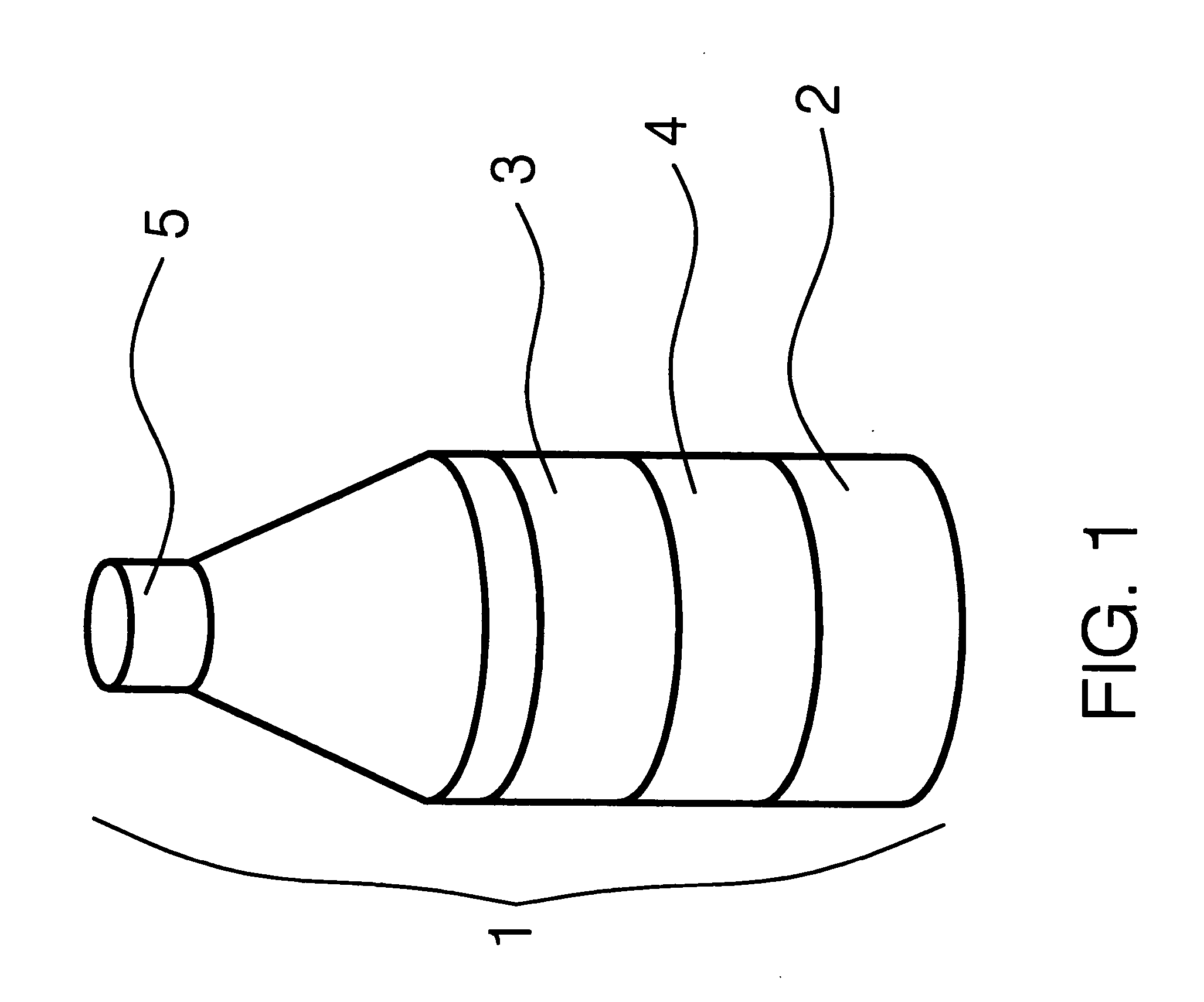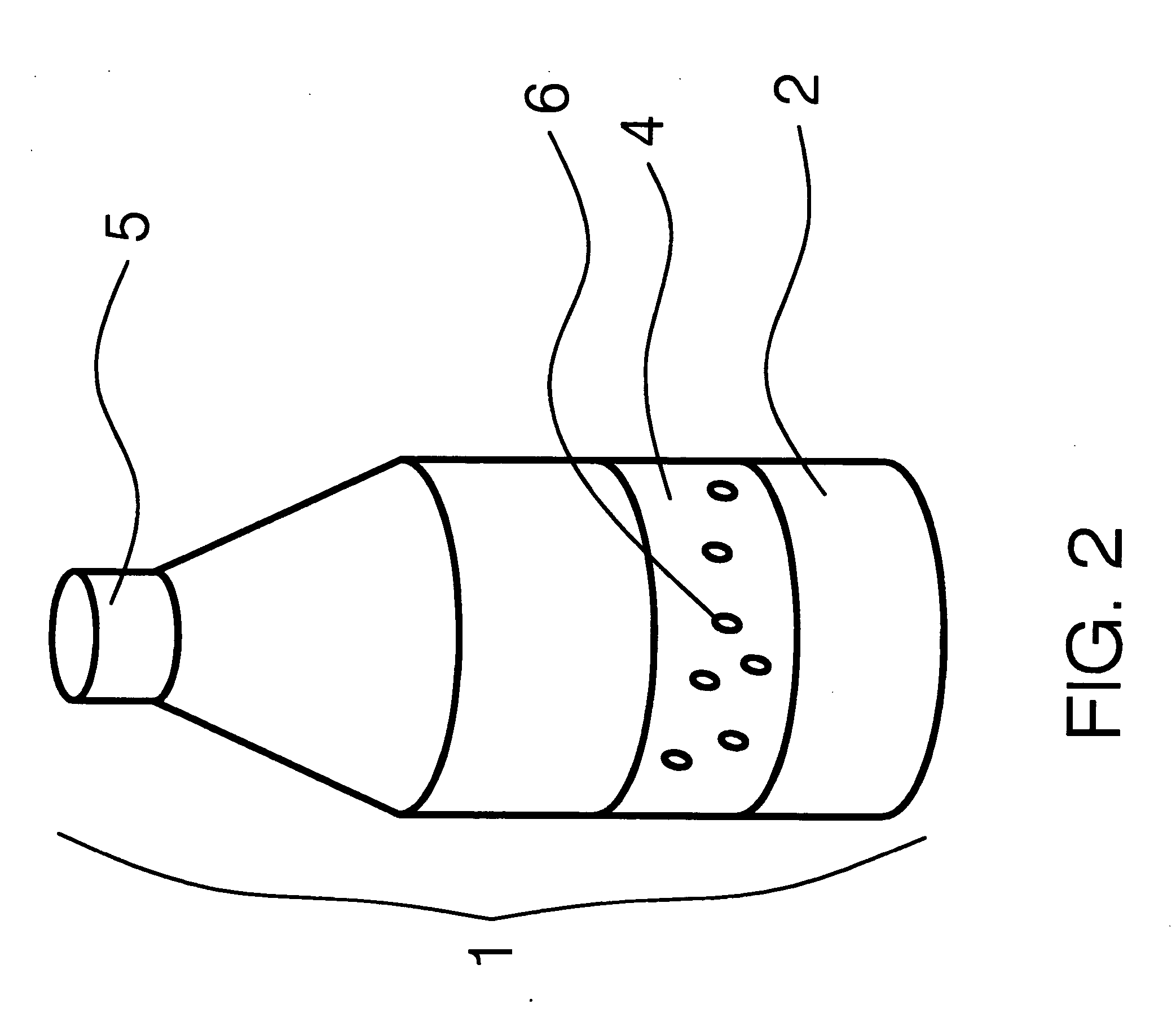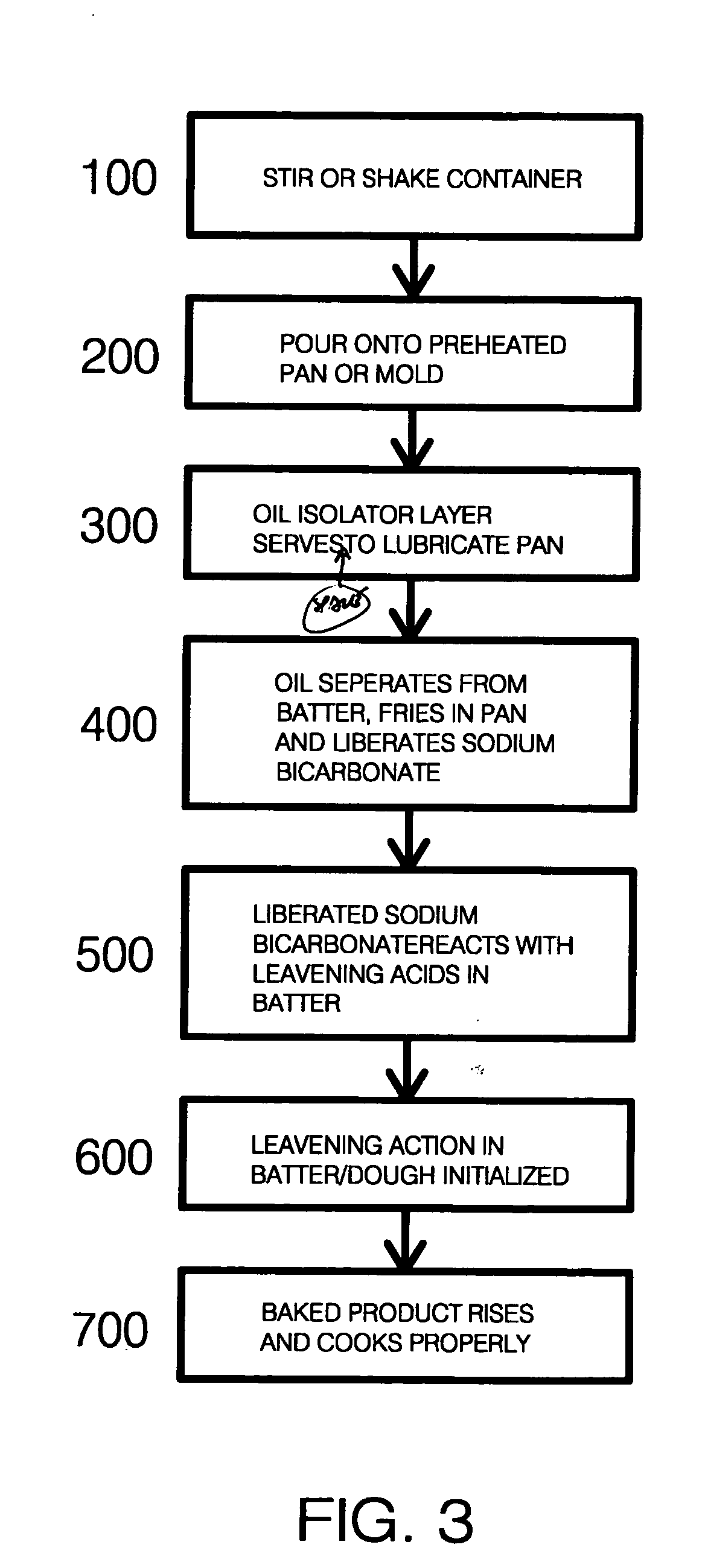Ready-to-use food product
a food product and ready-to-use technology, applied in the field of food products, can solve the problems of inconvenient or undesirable thawing of products, product thawing may be inconvenient or undesirable, and requires substantially constant refrigeration
- Summary
- Abstract
- Description
- Claims
- Application Information
AI Technical Summary
Benefits of technology
Problems solved by technology
Method used
Image
Examples
Embodiment Construction
[0028] It is to be understood that the figures and descriptions of the present invention have been simplified to illustrate elements that are relevant for a clear understanding of the present invention, while eliminating, for purposes of clarity, many other elements and steps that are typically found in preparing a food product. Those of ordinary skill in the art will recognize that other elements and / or steps are desirable and / or required in order to implement the present invention. However, because such elements are well known in the art, and because they do not facilitate a better understanding of the present invention, a discussion of such elements is not provided herein.
[0029] According to an aspect of the present invention, there is provided a method for preparing food substances, such as dough and premixed ready to use batter. According to an aspect of the present invention, there is provided a storage-stable batter and method for preparing the same. According to an aspect o...
PUM
 Login to View More
Login to View More Abstract
Description
Claims
Application Information
 Login to View More
Login to View More - R&D
- Intellectual Property
- Life Sciences
- Materials
- Tech Scout
- Unparalleled Data Quality
- Higher Quality Content
- 60% Fewer Hallucinations
Browse by: Latest US Patents, China's latest patents, Technical Efficacy Thesaurus, Application Domain, Technology Topic, Popular Technical Reports.
© 2025 PatSnap. All rights reserved.Legal|Privacy policy|Modern Slavery Act Transparency Statement|Sitemap|About US| Contact US: help@patsnap.com



